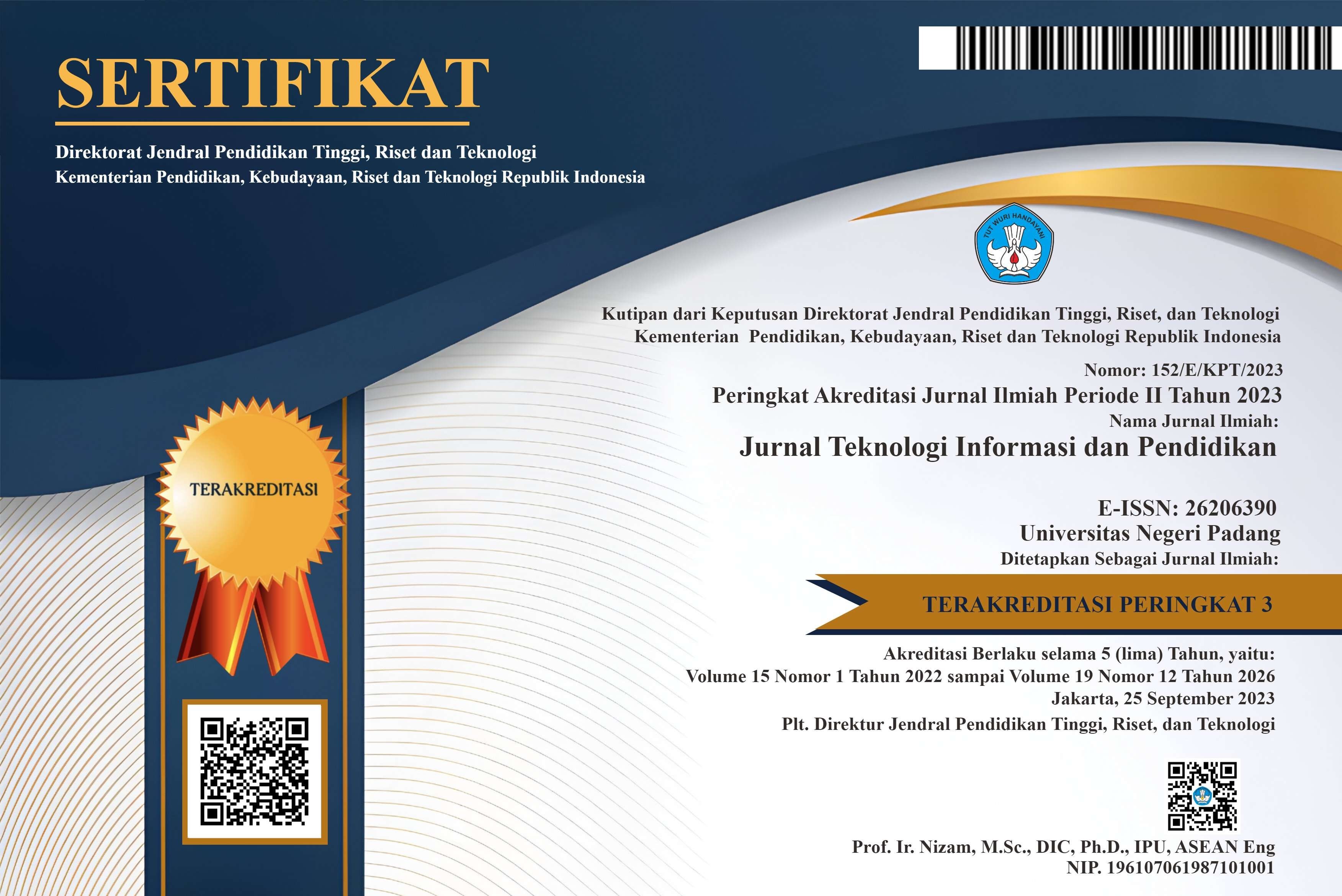Engaging Student Participation for Improving Quality of Lecturing Process in Higher Education Institution
Abstract
The quality of the lecturing process is an important part for higher education to obtain output in the form of quality graduates in accordance with the vision, mission, and goals of the higher education institution. One way this is done is by checking the suitability of the teaching process that has been carried out with a predetermined curriculum. Teaching suitability checks are usually carried out by matching the lecturing material that has been delivered by the teacher in a lecture, whether it is in accordance with the lecture syllabus. This can be biased when the teacher (as the entity that is assessed) has to enter the suitability of the lecturing data. Therefore, it is necessary for other parties who are also directly involved in the lecturing process to verify the lecturing process that has been entered by the teacher. This research is focused on making a quality monitoring system for the lecturing process that involves students as the party verifying the lecturing process. This verification process will use media in the form of email and electronic messages in the form of chat in the chat application. When a teacher enters the lecturing process data, which consists of the material presented and the students who are taking part in the lecture, a message to verify the lecturing process will be sent via email and chat to students. Students can verify whether the course is in accordance with the course syllabus plan. By checking the conformity charged to the learning participants, a better level of trust will be obtained in order to improve the quality of learning
References
Pavlovic, Dragan, et al. "The role of quality methods in improving education process: Case study." Serbian Journal of Management 9.2 (2014): 219-230..
Hampden-Thompson, Gillian, and Claudia Galindo. "School–family relationships, school satisfaction and the academic achievement of young people." Educational Review 69.2 (2017): 248-265..
Li, Xiaowei, and Yuan Xue. "A survey on server-side approaches to securing web applications." ACM Computing Surveys (CSUR) 46.4 (2014): 1-29.
Rothke, Ben. "Advanced Encryption Standard (AES)." Encyclopedia of Computer Science and Technology (2017): 101.
Patel, Sakshi, et al. "Colour image encryption based on customized neural network and DNA encoding." Neural Computing and Applications (2021): 1-18.
Fathy, Ahmed, et al. "Advanced encryption standard algorithm: Issues and implementation aspects." International Conference on Advanced Machine Learning Technologies and Applications. Springer, Berlin, Heidelberg, 2012.
Lee, Bih-Hwang, Ervin Kusuma Dewi, and Muhammad Farid Wajdi. "Data security in cloud computing using AES under HEROKU cloud." 2018 27th Wireless and Optical Communication Conference (WOCC). IEEE, 2018.
Simarmata, Janner, et al. "Implementation of AES Algorithm for information security of web-based application." Int. J. Eng. Technol 7.3.4 (2018): 318-320.
Khatri, Sunil Kumar, and Karishma Narula. "General maturity model for social messaging application." 2015 4th International Conference on Reliability, Infocom Technologies and Optimization (ICRITO)(Trends and Future Directions). IEEE, 2015.
Sutikno, Tole, et al. "WhatsApp, viber and telegram: Which is the best for instant messaging?." International Journal of Electrical & Computer Engineering (2088-8708) 6.3 (2016).
Copyright (c) 2022 Jurnal Teknologi Informasi dan Pendidikan

This work is licensed under a Creative Commons Attribution-ShareAlike 4.0 International License.















.png)














